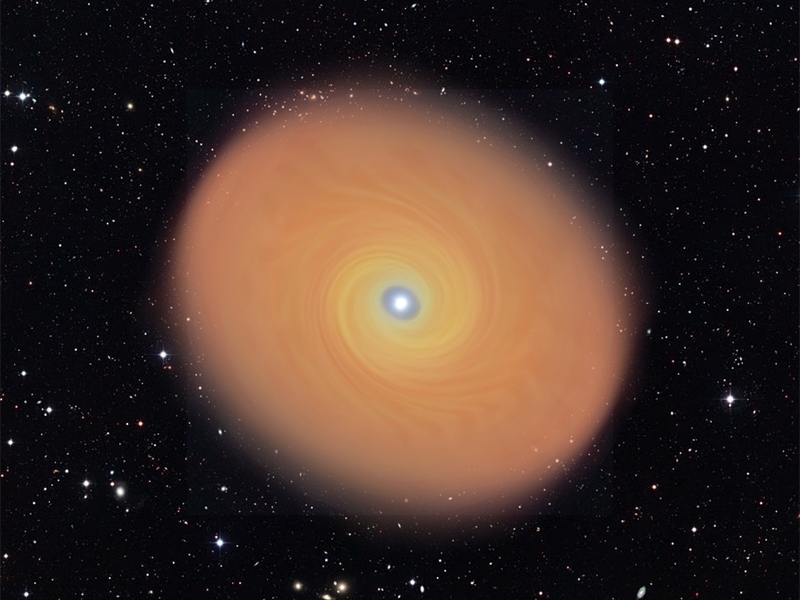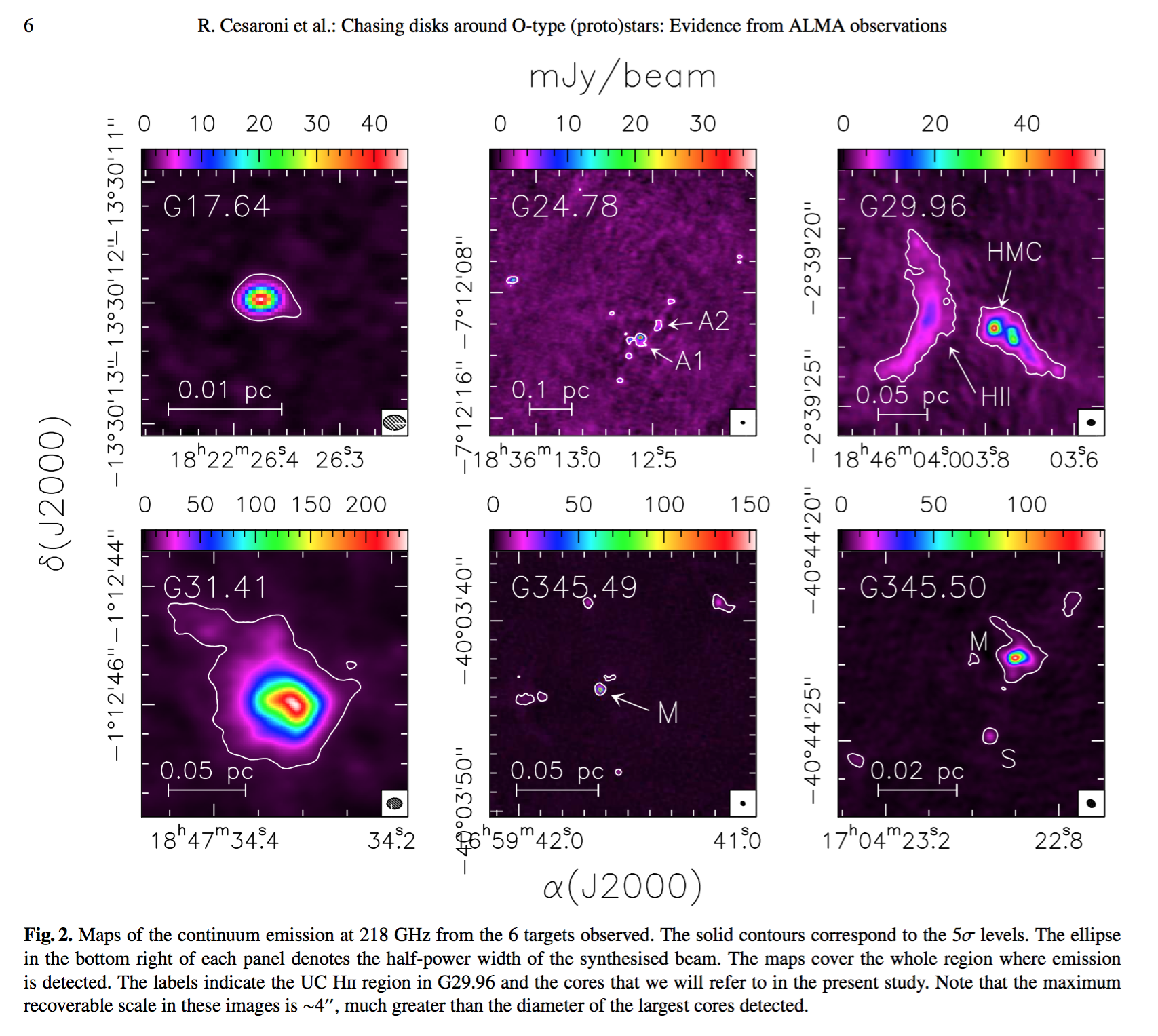Supermassive stars also appear to be formed in a process that involves rotating circumstellar discs of dust, just like their smaller siblings with a ‘normal’ mass. This was revealed in new research by 24 scientists, among whom was Floris van der Tak (SRON), who wanted to know why stars do not all evolve to be the same.

(Dutch follows English)
When a sun-like star is born from a cloud of gas and dust, the dust and gas do not fall directly onto the growing baby star. Dust that comes near the star first rotates in a disc around this protostar and is then added to the star via the disc. However, besides the very frequently occurring stars like our sun, there are also stars from far more massive categories, the biggest of which is the O-type. Such stars are at least ten times heavier than our sun.
The researchers wondered whether they could also observe the birth of these heavy types of stars somewhere in the universe, and whether discs of dust revolved around these as well. If such discs were present, then they wanted to know how the properties of the discs of baby suns differed from those of their heavier family members.
In 2015, the birth of such a heavy O-type star with a circumstellar disc had already been observed. The 24 researchers, led by Riccardo Cesaroni, have now described four more stars. They used the ALMA telescope in Chile to observe the stars in the infrared spectrum, which allowed them to observe the rotating discs as well.
The heavy discs weigh about half of the protostar’s mass. That is a lot: in the case of sun-like protostar, the disc weighs about 1 to 10 percent of the protostar’s mass.
“Furthermore, such weight makes the heavy discs unstable due to their own gravity. That might explain why this type of star can be far heavier than sun-like stars,” says Van der Tak.
The researchers published their results in the renowned journal Astrophysics & Astronomy. A pre-print is already available at http://www.arcetri.astro.it/science/starform/preprints/cesa_29.pdf
Zwaarste sterren ontstaan ook uit schijven
Super zwaarlijvige sterren blijken óók te ontstaan in een proces met draaiende stofschijven, net als hun broertjes en zusjes met een ‘normaal’ gewicht. Dat blijkt uit nieuw onderzoek van 24 onderzoekers, onder wie Floris van der Tak (SRON), die willen weten waarom niet alle sterren hetzelfde worden.

Als een zon-achtige ster geboren wordt uit een wolk gas en stof, valt het stof en gas niet rechtstreeks op de aangroeiende baby-ster. Stof dat in de buurt komt, gaat eerst als een schijf om deze protoster heen draaien en voegt zich dan via de schijf bij de ster.
Maar behalve de heel veel voorkomende sterren zoals onze zon, zijn er ook sterren uit veel zwaardere categorieën, waarbij het O-type de zwaarste categorie is. Zulke sterren zijn tenminste meer dan tien keer zo zwaar als onze zon.
De onderzoekers vroegen zich af of ze ook ergens in het heelal de geboorte van deze zware types konden zien, en of er dan ook schijven omheen draaien. En wat dan de verschillen zijn in eigenschappen tussen de schijven van babyzonnen en die van hun zwaardere familieleden.
In 2015 is de geboorte van een dergelijk zwaar O-type ster met een schijf eromheen al eens gezien. De 24 onderzoekers, onder leiding van Riccardo Cesaroni hebben er nu nog vier beschreven, en met de ALMA telescoop in Chili in infrarood licht bekeken. Zo konden ze ook hier de draaiende schijven zien.
De zware schijven wogen zelf alleen al ongeveer de helft van hun protoster. Dat is veel: bij zonachtige sterren-in-spe weegt de schijf ongeveer 1 tot 10 procent van de protoster.
“Zulk gewicht maakt de zware schijven bovendien instabiel vanwege hun eigen zwaartekracht. Misschien verklaart dit wel waarom dit type sterren zoveel zwaarder kan worden dan zonachtige sterren”, aldus Van der Tak.
De onderzoekers mogen hun resultaat publiceren in het gerenommeerde vakblad Astrophysics & Astronomy. Een pre-print is alvast te lezen op http://www.arcetri.astro.it/science/starform/preprints/cesa_29.pdf.


